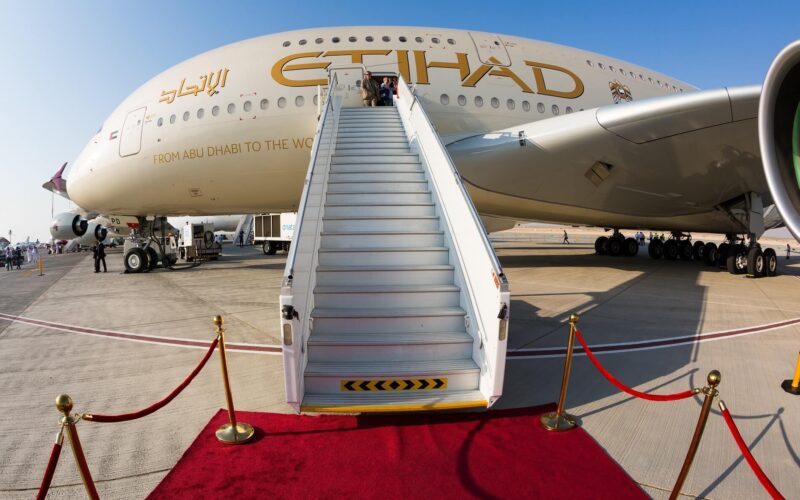Etihad Airways has always been amongst the airlines that are mostly associated with luxury and prestige. One of the “big three” of the Middle East (ME3), the Abu Dhabi-based flag carrier of the United Arab Emirates tries to remind about this every way it can, gold-and-white aesthetic notwithstanding.
It is only natural that Etihad aircraft are the most premium machines any airline can buy, save maybe for the ultra-expensive executive jets… and even in this area Etihad attempts to compensate by making the flight experience as exclusive and as private-like as possible.
But behind that classy image, problems have been brewing for several years now. There were massive losses, unfortunate investments, a lifeline from the government, and finally – the COVID-19 crisis that struck everything the ME3’s business model was about: international, long-range travel between business hotspots that got unscrupulously locked down as quarantines set in.
The recovery was difficult for Etihad, arguably a lot more difficult than for its two main comrades – Emirates and Qatar Airways. Almost by every measurable metric, Etihad lags behind them.
And what about Etihad’s fleet? The collection of some of the world’s most expensive airliners had to spend so much time in storage, collecting dust and debts and waiting for an uncertain future that – even if it comes as expected – would probably mean an inevitable retirement for some of them. What is its state now? Let’s see.
The collection in its entirety
Etihad employs a hub-to-hub model, which means that it is aimed at connecting only the largest population centers and leaving the regional flights to smaller fish.
This means that most of Etihad’s collection consists of wide-body, long-range airliners, which the carrier tends to purchase from Boeing: the 787 and 777 families constitute more than two-thirds of Etihad’s entire fleet, and more than four-fifths of its active part.
An exception to that is the Airbus A320 family – several narrow-body jets Etihad uses to fly to locations in the Middle East, Southwestern Asia, Southeastern Europe, and Northern Africa.
Of course, it wasn’t always like that: for a long time, Etihad’s fleet was the most diverse of the Middle Eastern trio and included a large number of Airbus widebodies including the A300, the A330, the A340, and the A380. A300s were retired a decade ago, while A340s and A330s fell victim to the airline’s restructuring and were all sold off or put into long-term storage between 2017 and 2019.
The A380 is yet another story. Once the pride and joy of Etihad, the world’s largest (and, many would say, the most luxurious) airliner became a liability once the pandemic rolled in and Etihad decided to put all of its superjumbos away.
“Anything with more than two engines is not going to be able to sustain itself going forward, particularly if your brand is as serious about sustainability as Etihad is,” CEO Tony Douglas said in September 2020. Since early 2021, all of Etihad’s A380s reside in European long-term storage facilities and their future does not seem very optimistic.
A couple of Boeing 747s and 767s were also used by Etihad at one point in its history, all retired in the name of efficiency. Speaking about efficiency, there is one more ultra-modern aircraft that the airline has just started introducing into its lineup. Let’s return to it when the time comes. First, what would you fly if you decided to purchase a ticket onto Etihad’s flight today?
Airbus A320 family
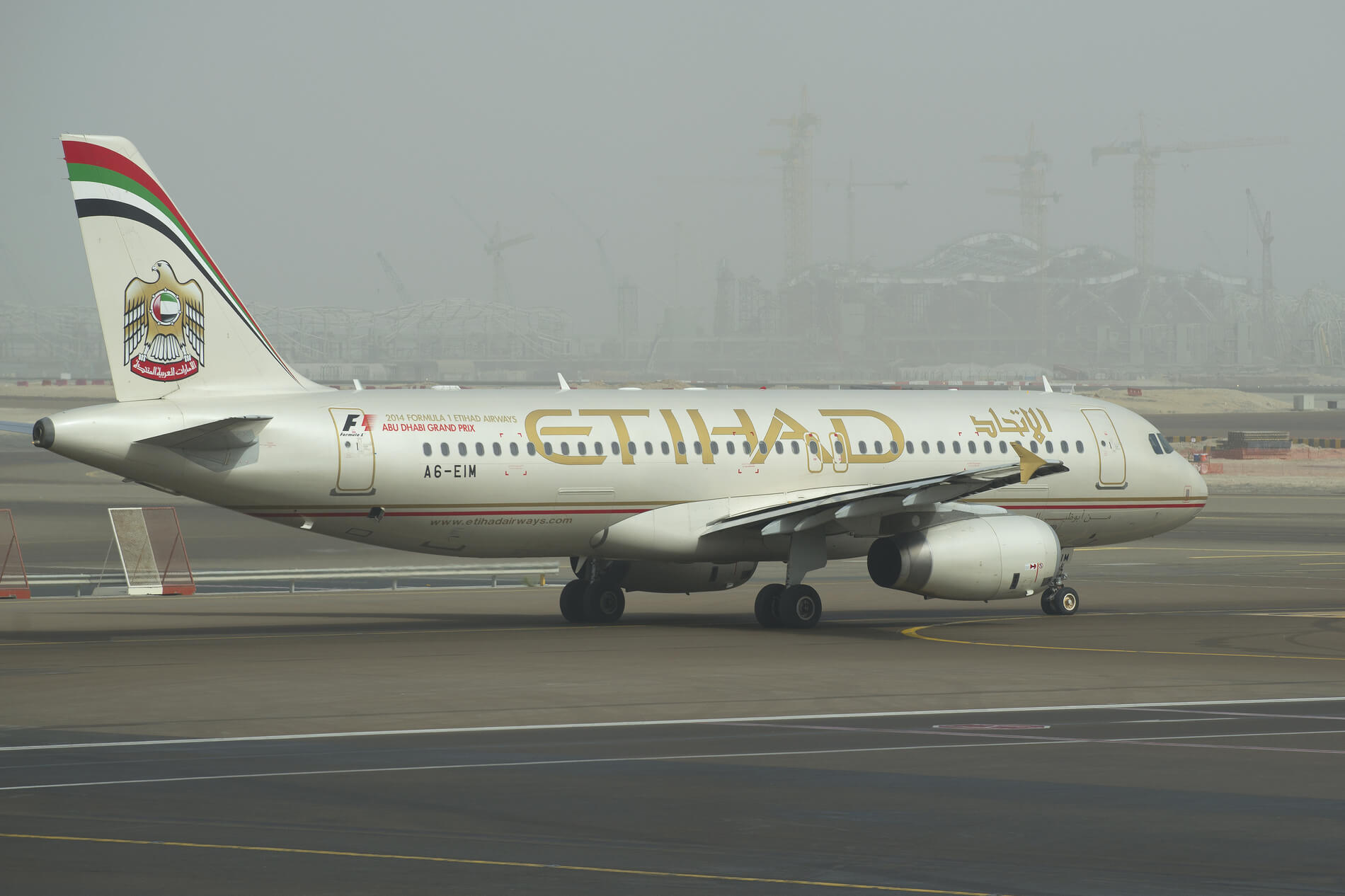
One of Etihad’s A320-200s in Seychelles (Image: Markus Mainka / Shutterstock)
Airbus A320-200s and A321-200s are amongst the oldest aircraft in the carrier’s lineup, some of them over a decade old – something unprecedented for Etihad (although the oldest of them are in long-term storage). According to Planespotters.net, of 19 aircraft belonging to this family 12 are active.
One can mostly catch them connecting Abu Dhabi (AUH) with such destinations as Jeddah (JED), Cairo (CAI), or Lahore (LHE) – somewhere way too close for the big boys.
Few years ago Etihad planned to expand its fleet of narrow-bodies, but an order for A320neos became one of the first victims of the coronacrisis and it is difficult to say if a replacement will ever come.
Boeing 777 family
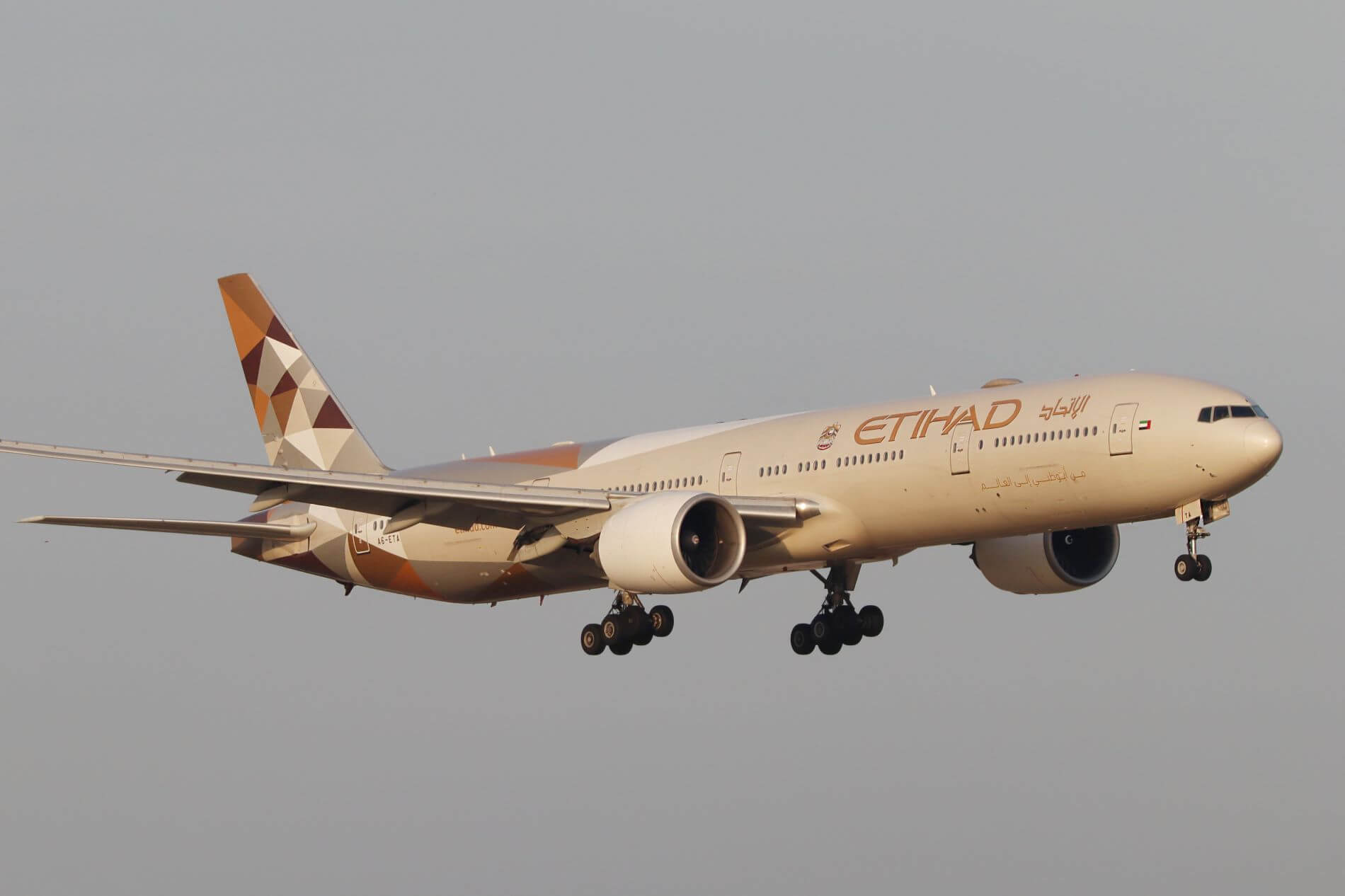
Etihad Airways Boeing 777-300ER landing (Image: KITTIKUN YOKSAP / Shutterstock)
It is difficult to believe, but some triple-sevens in Etihad’s fleet are even older than the A320s. The airline has nineteen 777-300ERs, of which more than half, according to Planespotters.net data, are inactive. Of the active ones, two – registration numbers A6-ETB and A6-ETC – were delivered in 2006, a part of the very first order Etihad Airways filled with Boeing.
Other 777s are significantly newer and complement the carrier’s 787s on the long-range routes whenever larger capacity is needed.
There is no question that the type is soon going to be retired. Its replacement has been somewhat problematic for Etihad, as well as many other airlines that sought to replace their ageing triple sevens. The most natural substitute for them is the 777X – Boeing’s newest and shiniest jet, a new generation that would be much more efficient. Yet, problems with its development were numerous and Etihad – along with some other carriers – kept reducing its order, placed back in 2013. The company still expects to receive half-a-dozen mini jumbos, but it is difficult to say when that would happen.
Boeing 787 Dreamliner family
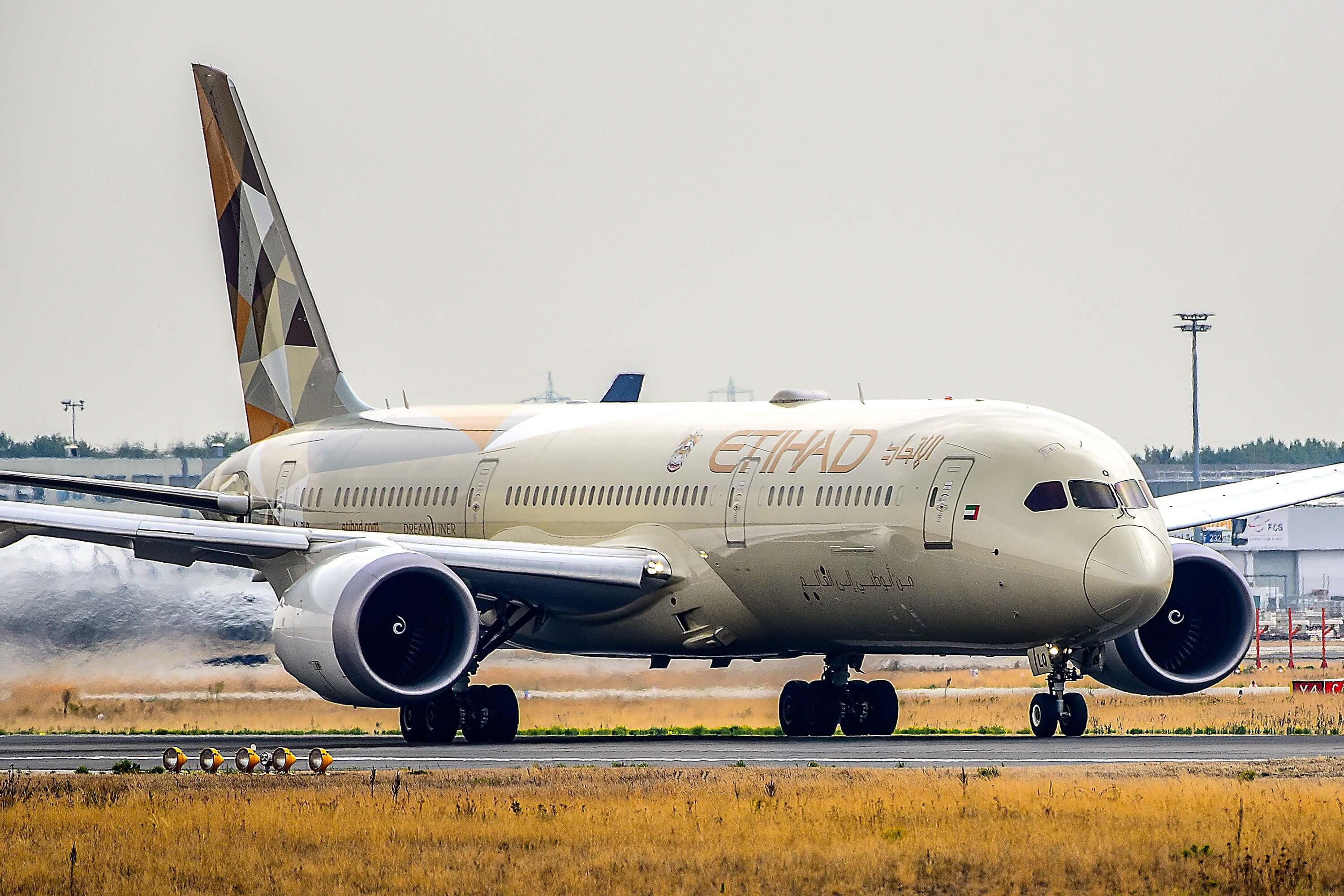
One of the newer 787s (Image: Vytautas Kielaitis / Shutterstock)
Dreamliners are the backbone of Etihad’s fleet. It is difficult to argue with that.
The carrier has 40 aircraft of this model, 30 of them in the 787-9 variant and 10 of them 787-10s. One of the 10s (number A6-BMJ) is not yet delivered and still remains in the US, although – as Radarbox data shows – it has already been flying in February 2021.
All of the airline’s Dreamliners are active in one or another way, although some of them stand out in their activity – such as the ecoDemonstrator and the Greenliner, two aircraft intended to demonstrate sustainability-oriented technologies.
Needless to say, if you are flying Etihad, you are most likely to fly on the 787. According to Douglas, it is the most efficient – hence, the most profitable – aircraft in the carrier’s inventory, a tribute to Boeing’s attempt to produce a wide-body airliner of the new generation.
But it is possible that it will not remain the only aircraft of this category.
Airbus A350 XWB family
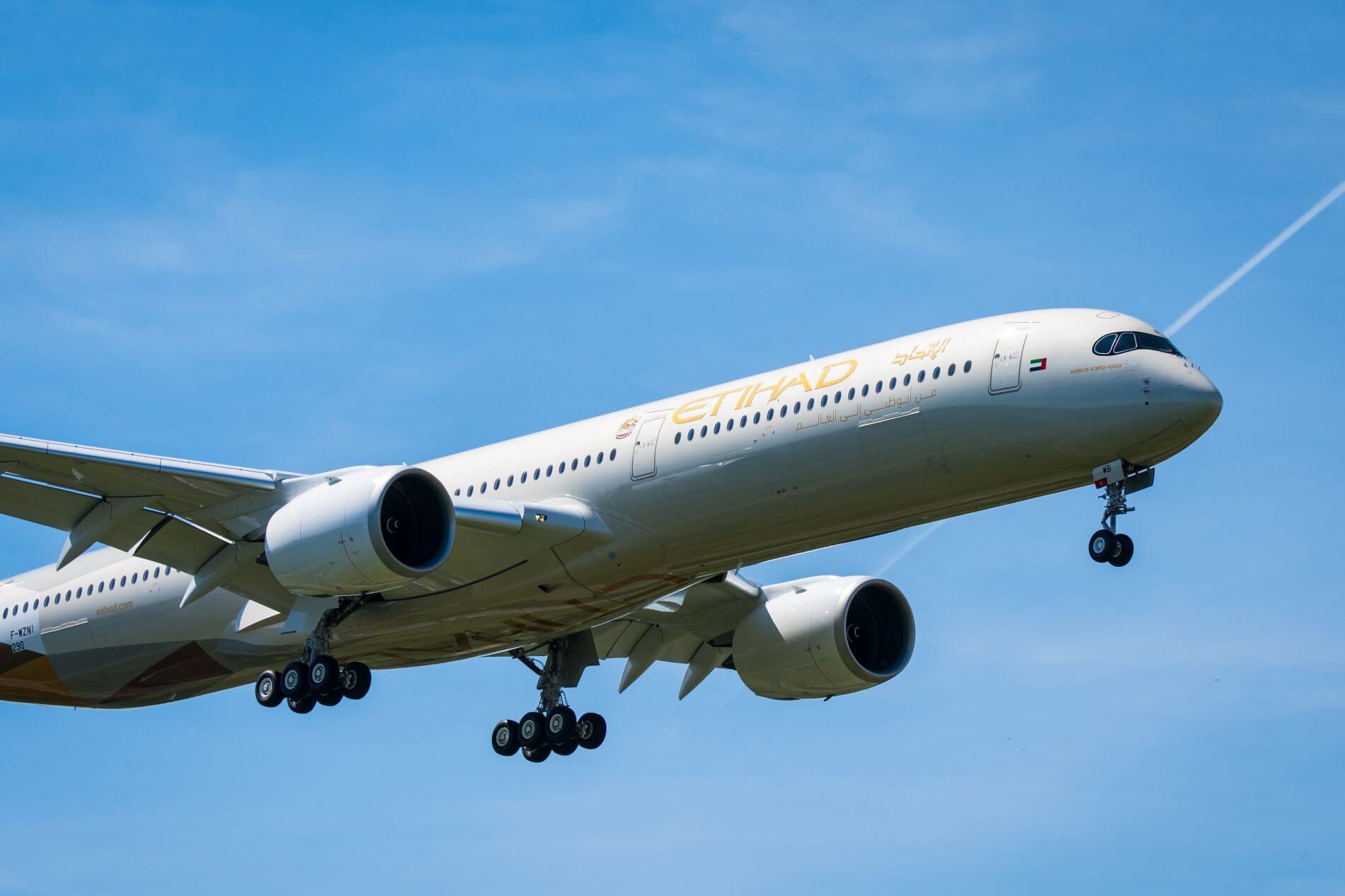
Brand-new A350 during one of the test flights in France (Image: EA Photography / Shutterstock)
As of July 2021, Etihad has received five A350-1000s, out of the order for 20. Originally, it planned to purchase 62 Airbus ultra-efficient wide-bodies, which would make it the most numerous aircraft in the carrier’s fleet. But then times got difficult, the order was slashed a couple of times, and the twenty aircraft were all that remained.
Five of them, when delivered, went straight into storage. There were hints that Etihad was not going to introduce the type into service at all. Nevertheless, a couple of them were withdrawn from storage in May 2021.But as of July, they are not yet conducting passenger operations and Etihad has not introduced them officially.
If introduced, they would replace the withdrawn A380s, as well as – possibly – some of the older Boeing 777s. It is also possible that if the situation improves for Etihad, more A350s are going to be delivered, vastly reducing the average age of the carrier’s fleet and improving its efficiency. Will that happen? Let’s see

